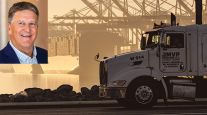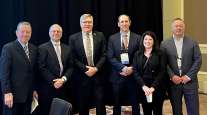Senior Reporter
Port Leaders Warn of Supply Chain Challenges as Holidays Near
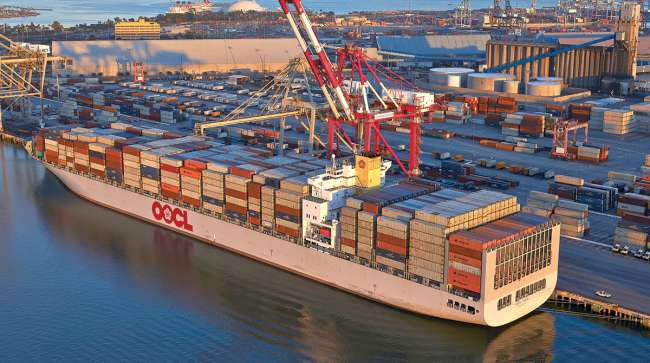
[Stay on top of transportation news: Get TTNews in your inbox.]
AUSTIN, Texas — The leader of one of the nation’s busiest seaports said the next several months will severely challenge an already overtaxed supply chain, and the situation has reached a “crisis” level.
“This is not going to be resolved this year,” said Mario Cordero, executive director of the Port of Long Beach in Long Beach, Calif. “Are we going to mitigate these numbers? Absolutely. But are we going to get back to normal this year? The answer is no. If we are going to return to normalcy, I think it will be around the spring of 2022.”
He spoke with Transport Topics on Sept. 29, during the American Association of Port Authorities annual convention here.
Cordero said 66 ships were waiting at San Pedro Bay, the Pacific Ocean entry point for Long Beach and the adjacent Port of Los Angeles, the nation’s busiest facility.

Cordero
The backup impacts the nation’s supply chain because one-third of all imported cargo shipped on ocean carriers is processed at those two locations.
“My message to the American consumer is you better shop early and don’t wait until the last minute,” Cordero said.
The two ports recently announced plans to expand hours to eventually move to a 24/7 operation by encouraging trucking companies and railroads to utilize the ports around the clock.
Cordero said improving efficiency is essential as both ports will see high single-digit or double-digit annual growth over the next 10 years.
“Something needs to change. The forecast for 2021 is 20 million TEU containers, and there’s not another gateway in the U.S. that comes close to half that number," Cordero said. “For 2025, it’s 24 million, and if you look at the end of this decade, it’s 27 million.”
During a panel discussion at AAPA, Steven Wen, CEO of Dray Alliance, a Los Angeles-based technology company working to improve port efficiency, said his company is making an impact after being founded only four years ago.
“The only way we think we can solve the congestion problem is to become more predictive and share the data,” he said. “Truckers in Los Angeles miss 30-50% of their appointments, and what we can do is work with the ports to make sure those unused appointments get used.”
The congestion issue is not limited to Pacific facilities. On Sept. 27, some 23 ships were waiting to be unloaded at the nation’s fourth-busiest facility, the Port of Savannah, Ga., and an official said that number is “above average.”
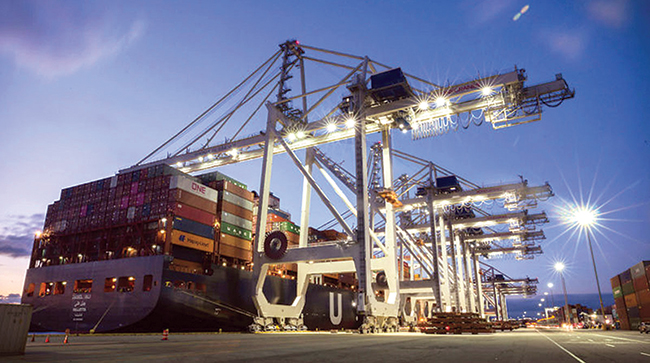
Activity at the Port of Savannah. (Stephen B. Morton/Georgia Ports Authority)
Georgia’s port authority recently said it would spend an additional $34 million to expand its empty container storage capacity, adding space for 1.6 million more twenty-foot-equivalent (TEU) containers, with phase one beginning this year.
In its just-completed fiscal 2021, Savannah processed 5.3 million containers, up 20% from 2020.
Adding to the congestion, AAPA CEO Chris Connor told TT as the holiday shipping season began in late summer he believes some retailers have moved up their shipments to avoid congestion at the nation’s ports. Still, inadvertently that’s tightening up the congestion at warehouses across the country where vacancy rates are less than 5%.
“There have been a lot of orders that were accelerated for Christmas or Halloween, and that’s compounded the congestion problem,” he said.
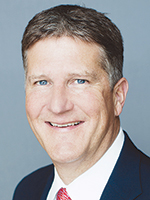
Connor
The congestion is taking place as online retail purchases continue to surge, and retailers are finding consumers are more willing to purchase big-ticket, durable goods items such as refrigerators, washers and dryers, and other large items online, then have them delivered to their homes by trucking companies that specialize in final-mile delivery and setups.
“COVID has completely changed consumption,” Jim Rinchiuso, FedEx managing director of ocean projects, told the panel. “The biggest challenge we are facing is doing a better job aggregating data. Where you’re seeing data from a factory in China to a trucker, a barge, a ship, where we can help importers manage their supply chains and inventory carrying costs. We need to get this data into a single platform, like an Uber app.”
Northwest Seaport Alliance CEO John Wolfe told the panel that all of the terminals at the ports of Seattle and Tacoma are using one platform, improving efficiency.
“That gives us a starting point to build our own port portal,” he said. “We’re working to standardize our appointment systems, so if you’re a drayage driver, you can go on the portal and make an appointment at any one of the five international container terminals, rather than going into each individual system.”
Want more news? Listen to today's daily briefing below or go here for more info:


